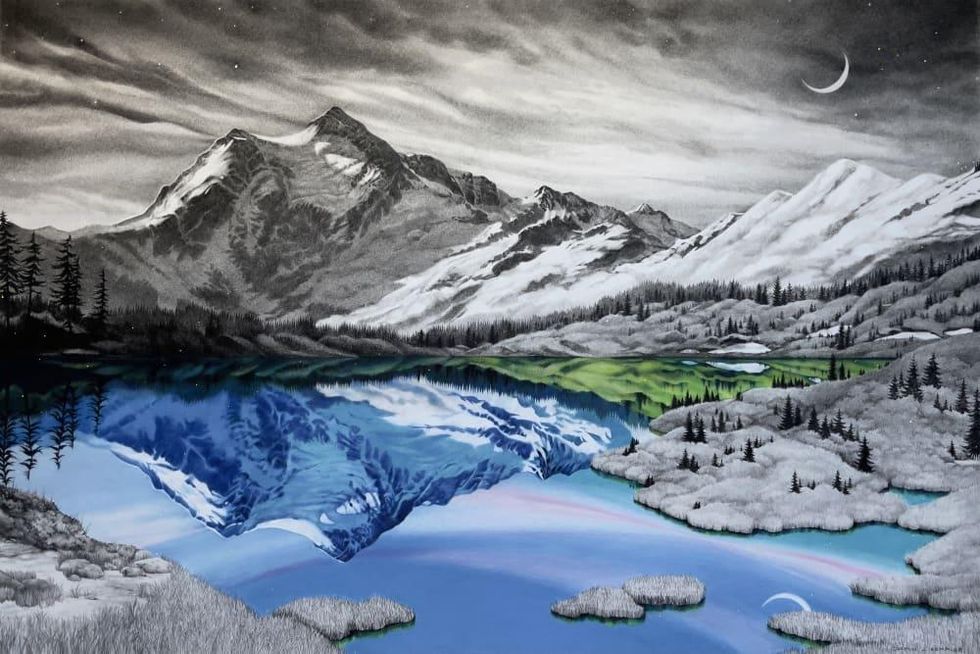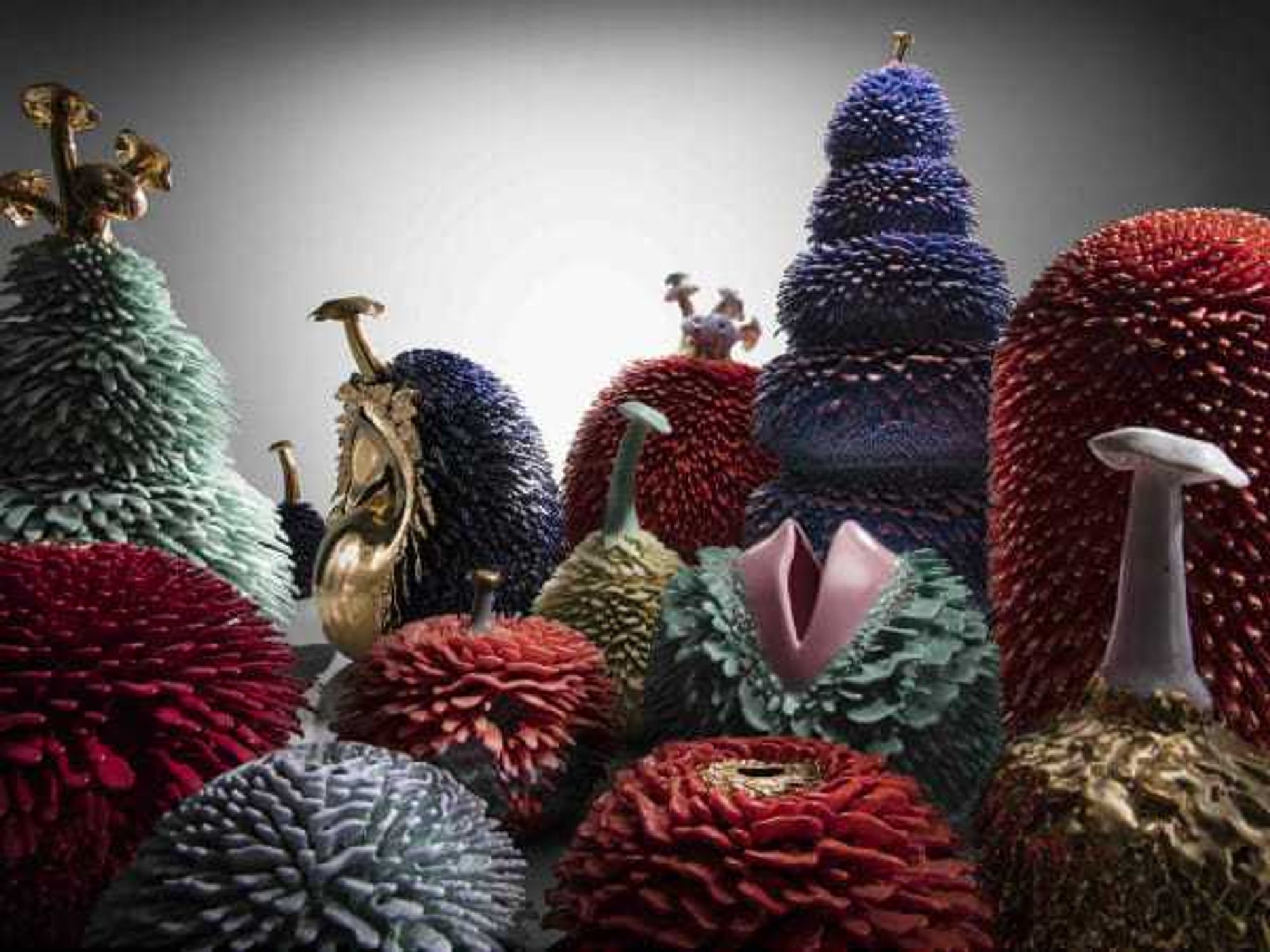state of the arts
7 energizing art exhibits blossoming in Austin this month

These seven shows and installations offer a breath of fresh air in the Austin arts scene this March. Craving a soupçon of something ornate? Rendezvous at the “Fantastically French!” exhibit at the Blanton, which has 16th to 18th century prints on display. The Carver Museum presents the first-ever career retrospective of legendary photographer, humanitarian, and educator Jamel Shabazz. The Ransom Center examines James Joyce’s legendary tome, Ulysses, a landmark work of literary modernism, and the unacknowledged role women played in creating this masterpiece. And check out an artist’s take on life during COVID-19 through vibrant and cheeky monoprints at Flatbed Press. The Austin art scene is flourishing and there is so much to savor.
Blanton Museum of Art
“Fantastically French! Design and Architecture in 16th- to 18th-Century Prints”
March 5-August 14
From arabesques to grotesques and sphinxes to snails, French printmakers combined ancient decorative motifs with newly invented ones to create designs for everything from jewelry to architectural facades. Beginning in the mid-16th century with ornamentation for the royal hunting lodge of Fontainebleau, through garden designs at the Palace of Versailles, to patterns for 18th century home furnishings, prints were important sites of invention and served as vehicles for the proliferation of decorative motifs across a variety of media. Drawing primarily from the Blanton’s extensive holdings of French prints, this exhibition invites visitors to look closely at exquisite details, marvel at fantastic forms, and delight in ornate embellishments that celebrate the creativity of artistic imagination across three centuries.
Wally Workman Gallery
“Becky Joye + Lauren Jaben”
March 5-27
Collage artist Lauren Jaben uses found materials to create works that are both contemplative in process as well as form; meticulous parts become an interrelated whole. Similarly, in Becky Joye’s exuberantly quilted structures, there lies a metaphor for the varied but universal human experience amid the ongoing pandemic, representing the simultaneous want to protect but the overwhelming need to connect.
Carver Museum
“Jamel Shabazz: Peace to the Queen”
Now through August 15
Legendary photographer, humanitarian, and educator Jamel Shabazz presents his first career retrospective, which spans four decades of work by the artist and features portraits of women of color that are candid, artful, and often intimate. Brooklyn native Shabazz picked up his first camera at the age of 15 and began to document his peers. Inspired by photographers Leonard Freed, James Van Der Zee, and Gordon Parks, and their compelling documentation of Black culture, he sought to build on the legacy of their work. Using the public spaces of New York City as his backdrop, Shabazz embarked on a journey to document and affirm the dignity of communities devastated by Reaganomics, the war on drugs, and the continued criminalization of poor people.
Harry Ransom Center
“Women and the Making of Joyce’s Ulysses”
Opens March 4
James Joyce’s Ulysses, considered a landmark work of literary modernism, was first published on February 2, 1922. This exhibition marks the 100th anniversary of the book’s publication and investigates the important and largely unacknowledged role of women in the realization of his famed masterpiece. Objects from the Ransom Center’s James Joyce Collection tell the story of the formative role of his family members and, in particular, of four women — Margaret Anderson, Jane Heap, Harriet Shaw Weaver, and Sylvia Beach, who were associated with innovative literary experimentation of the period — all of whom helped Joyce’s novel gain widespread notoriety and success. Also at the Ransom starting March 4 is the Blaeu World Map. Published by Joan Blaeu in 1648, the massive wall map of the world, Nova totius terrarum orbis tabula, is newly conserved and will be on view for the first time.
Cloud Tree Studios & Gallery
“Dreams Carry Water: Lee Barber”
March 25-April 10
Lee Barber creates animal and human figures colliding and morphing in landscapes using a language “similar to dreams.” “Beginning with clouds of charcoal dust on panel, I look for hints of images and stories that I can pull out and refine. In this way, I’m running interference with the logical mind, entering through a side door,” the artist explains. With this work, Barber honors the unknowable and gets closer to “our daily experience of strangeness and wonder.”
grayDUCK Gallery
“Soomin Jung: When You Call My Name Quietly”
March 26-May 1
“When You Call My Name Quietly” is a series of landscape drawings rendered in gouache, colored pencil, and graphite on paper, simultaneously accurate and surreal. As the daughter of a retired Republic of Korea Army colonel, Soomin Jung moved and transferred frequently to new schools, “adopting to the new landscapes and atmospheres in various regions and making new friends who were vastly different than from the previous places.” This gave her a keen perception of the world around her, the myriad influences that can distort the perception, and the landscapes that withstand the changes through time. Each of the drawings in this exhibition is titled from the lines of a message she wrote to her children.
Flatbed Press
“The Love and Money Show: Monoprints by Maricela Sanchez”
March 5-April 9
“The Love and Money Show” is an exhibition of monoprints created at Flatbed during the COVID-19 pandemic by Texas-based artist Maricela Sanchez. Sanchez uses her creativity and craftsmanship to break down barriers between art and daily life. Over the past 35 years, Sanchez has worked as a high-end industrial designer and practices as a painter, printmaker, sculptor, and mixed-media artist. This work is a reflection of the pandemic and news of the economy, the stimulus checks, and countless stories of sadness and hardships. Using the iconic imagery of a $100 bill and repeating patterns of lips in the multilayered monoprints, Sanchez created her own currency. The result is a vibrant, cheeky, and physically and conceptually layered series of large monoprints.







